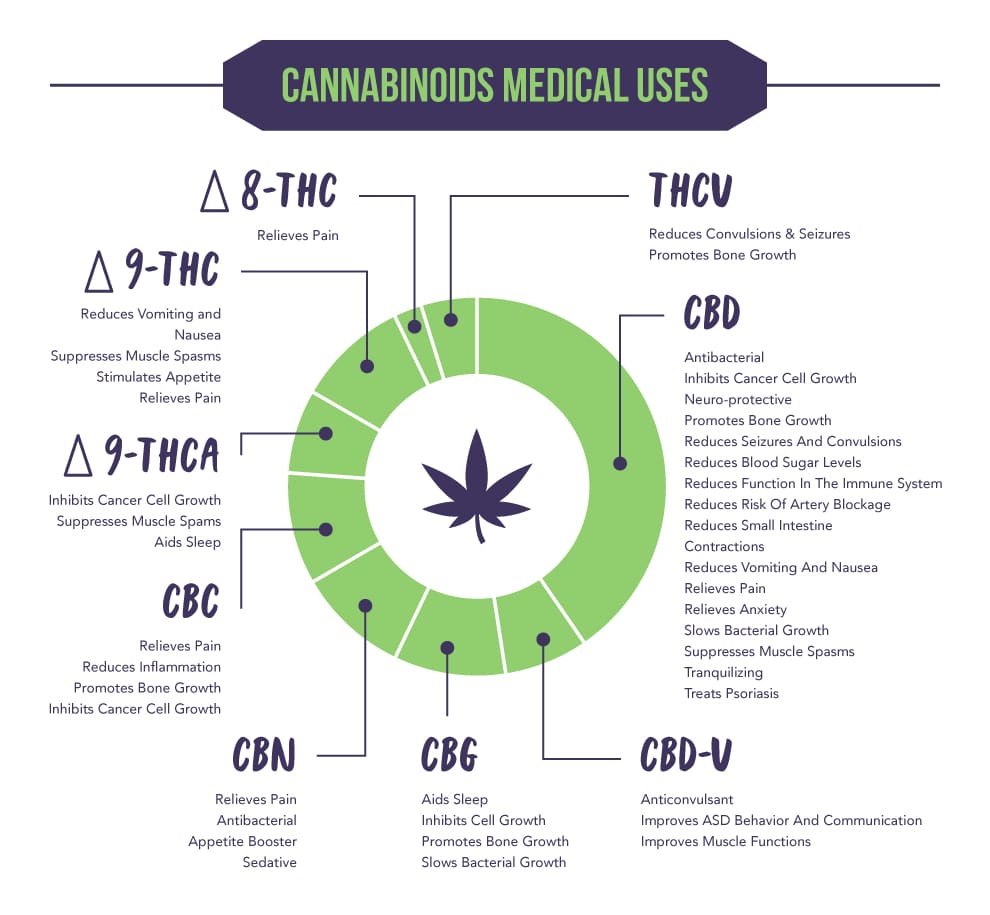Using CBD to Combat PTS and PTSD
As a veteran who served overseas and spent years surrounded by those directly involved in combat or directly supporting those in combat, I’ve seen firsthand the causes of military-related Post-Traumatic Stress, as well as the fallout after the fact once those same servicemembers go home and try to reintegrate into civilian life with their families, at times seeing the short-lived Post-Traumatic Stress develop into the more serious Post-Traumatic Stress Disorder.
I’ve also seen first hand the incredible mitigating power of CBD and CBG on symptoms of the aforementioned ailments that can typically incapacitate the former or current servicemember to living anything resembling a “normal life”.
Dr. James Bender describes the differences between Post-Traumatic Stress (PTS) and Post-Traumatic Stress Disorder (PTSD) saying,
“PTS is a common, normal, and often adaptive response to experiencing a traumatic or stressful event. Common occurrences, like car accidents, can trigger PTS as well as more unusual events like military combat or kidnapping[…]If you’re experiencing post-traumatic stress, your heart may race, hands shake, you may sweat or feel afraid and nervous. After the stressful event, you might avoid or be leery of engaging in that activity again, you may have a bad dream about the event you just experienced, or you may feel nervous in a situation that reminds you of the unpleasant event. Although they can be momentarily intense, symptoms of PTS usually subside a few days after the event and won’t cause any prolonged meaningful interference with your life.”
He goes on to add:
“PTSD is a clinically-diagnosed condition listed in the Diagnostic and Statistical Manual of Mental Disorders, the recognized authority on mental illness diagnoses[…]Common symptoms of post-traumatic stress disorder include reliving a traumatic event through nightmares, flashbacks, or constantly thinking about it. You might avoid situations or people that remind you of the event, have only negative thoughts or emotions, and constantly feel jittery, nervous, or “on edge.” Although some of these symptoms sound similar to PTS, the difference is the duration and intensity. Symptoms that continue for more than one month, are severe, and interfere with your daily functioning are characteristic of PTSD.”
This curiosity around CBD’s healing properties started when I got out of the service. I helped launch an initiative once I left the Army with the goal to reconnect those that had been in the military, previously in a close-knit tribe-like community, finding again that camaraderie we had all experienced at one point during our time serving. That initiative became a nationwide sporting and gaming league for active duty, guard, and veteran servicemembers called Military Gaming League.
It was this experience that allowed me to see the very large need for proper care and treatment of those dealing with PTS and PTSD. Disconnection, depression, and even suicide was an altogether common occurrence within the service, but after growing to thousands of current and former military servicemembers, we began to see that those same elements were even more prominent once leaving and rejoining civilian life.
About a year ago, one of our members took his life. We had a small online memorial of sorts and it prompted a lot of questions and a good community discussion on how, when, and where to reach out for help (if you dear reader are yourself in a dark place, please call the National Suicide Prevention Hotline at 1-800-273-8255, it’s free, confidential and available 24/7, don’t choose a permanent solution to life’s temporary pain, talk to someone that can help).
This discussion centered mostly around the effects of PTSD and how damaging some of the prescribed medication can be on the individual taking it, at times mitigating one symptom (like depression), but adding to another (like social anxiety or nervousness). There was also a lot of discussion about how easily addictive some of the prescribed medication became, triggering another side many servicemembers deal with regarding substance abuse.
Weeks after this discussion I had dozens of conversations with veterans that had started using CBD to mitigate their PTSD symptoms and proactively wanted to sell me on its effectiveness. The feedback was astounding, complete transformation allowing them to get back to normal life, no addictive side effects, and no mental high like cannabis caused.
In short, from an anecdotal standpoint, it was obvious that this was a powerful but not well-understood alternative. A solution these servicemembers and veterans believed so passionately in that they made sure I heard their voices as we often advocated on behalf of the community for causes just like this.
So let’s look at the science a little bit.
MECHANISMS OF CBD: HOW DOES IT WORK?
First off, CBD is short for cannabidiol. Dr. Peter Grinspoon describes it as,
“…the second most prevalent of the active ingredients of cannabis (marijuana). While CBD is an essential component of medical marijuana, it is derived directly from the hemp plant, which is a cousin of the marijuana plant. While CBD is a component of marijuana (one of hundreds), by itself it does not cause a “high.” According to a report from the World Health Organization, “In humans, CBD exhibits no effects indicative of any abuse or dependence potential…. To date, there is no evidence of public health related problems associated with the use of pure CBD.”
Thailand Medical News put together this great visual as an overview:

Delta 8 THC is the main element that gets someone high when smoking marijuana, while CBD and other peripheral cannabinoids (like CBG, CBN, and CBC) more prominently seen in hemp plant strains, do not give a “high”, but instead promote a host of positive effects via the endocannabinoid system in our body.
That may be a foreign term, but here’s how it breaks down. The body is equipped with what is called the “endogenous cannabinoid system”; endo- meaning “internal or within” and -genous meaning “generating or producing”. There is a system inside the body that is present in our brain, nerves, organs, tissues, glands, and even in our immune cells that responds to cannabinoids.
This is important because this system has the ability to shut off negative memories through CB1 receptors. Cannabinoids–like CBD–are like keys that fit into these receptors, which opens the door to a sense of relief. This is only one of many reasons why CBD works to effectively mitigate PTSD.
As a naturally occurring plant-based substance, CBD achieves this without the negative damaging effects that can often come from the use of narcotics.
As I mentioned, cannabinoids are similar to a key which can open many doors through various molecular pathways. One of them activates the serotonin receptor 5-HT1A (aka hydroxytryptamine), which is not only anti-anxiety but also helps with addiction, appetite, sleep, pain perception, nausea, and vomiting. CBDA, the raw version of CBD, is even more effective on the 5-HT1A receptor, which affects the key brain areas that regulate defensive responses to fear symptoms.
Although 5-HT1A and GABAs are found to be the major cannabinoids responsible for CBD’s effects, one study lists various molecular mechanisms and pathways responsible for the efficacy of cannabinoids in general, which confer analgesic and anti-inflammatory effects.
It has been shown that PTSD is not only a psychological pain but also a physical one. Those who suffer from trauma have hyperarousal or hypervigilance symptoms, which is a state of heightened alert that causes muscle tension, joint pain, and chronic pain as a result of sleeping in tightly wound positions. People who suffer from severe PTSD may develop a fear or inability to go outside. This high level of stress increases cortisol levels, which tires the adrenal glands and keeps prolactin levels high, resulting in a sensitivity to pain. Thus, CBD not only relieves stress and fear but also chronic pain associated with PTSD.
In short, CBD and other cannabinoids are keys and switches to the body’s endocannabinoid system, whose balance is important to well-being because it regulates the nervous system as well as the immune system response. This system is present in most animals, so what exactly is it for?
THE ENDOCANNABINOID SYSTEM: WHY DO WE HAVE IT?
More and more research studies are being published about the role of the endocannabinoid systems of various organisms.
In primitive invertebrates like the hydra, its main function is as a feeding response. More complex animals like the black-capped chickadees have been studied to show that endocannabinoids are involved in food-storage memory in birds.
In humans, the endocannabinoid system plays an important role in pain perception, digestion, sleep, mood, and memory. These processes are regulated by the endocannabinoids that attach to their receptors and the enzymes that break them down. This activation and deactivation mechanism is important for the body to be in balance.
People who develop clinical endocannabinoid deficiency suffer from a myriad of seemingly unrelated symptoms such as: migraines, fibromyalgia, irritable bowel syndrome, dysmenorrhea, heightened sensitivity to pain, muscle spasm, among others. On the other hand, an overactive endocannabinoid system can lead to obesity and diabetes.
The importance of cannabinoids as a form of preventive treatment for ailments including PTSD becomes clear once we understand how the endocannabinoid system’s function is related to well-being.
CBD AS FIRST DEFENSE, NOT A LAST RESORT
Doctors are wary in prescribing cannabinoids to their patients due to their novelty, so CBD is used as a last resort when their PTSD proves to be treatment-resistant and the patient’s well-being is in imminent danger and rapidly deteriorating.
Despite this, people are starting to fight for access to the medical properties of cannabinoids like CBD. This growing movement towards preventative health measures has been gaining validity as new data from research around the world emerge. Countries are starting to legitimize these compounds and performing clinical trials to support their role in treating PTS and PTSD.
When a stressful event occurs, the nervous system reacts and changes hormone levels, stimulates neurotransmitters, and immune responses that cause brain inflammation. This chronic activation of these neurobiological processes leads to neuronal dysfunctions characteristic of PTSD. Low endocannabinoid tone results in amygdala hyperactivation common to depressed individuals, anxiety, and hyperarousal symptoms which leads to sleep difficulties, mood disorders, and even suicidality.
Various studies have shown the efficacy of CBD in the treatment of PTSD. In one study, 91% of patients experience a decrease in PTSD symptom severity after eight consecutive weeks into the treatment. It showed that CBD was generally well-tolerated compared to the side effects brought about by current medications, including selective serotonin reuptake inhibitors, serotonin/norepinephrine reuptake inhibitors, antiadrenergic agents, and second-generation antipsychotics.
CBD has been considered as a therapeutic alternative for PTSD, many of which are being proven in human trials. This is because approximately 10% of the population will be affected by this disorder, which if left untreated due to the scarcity of psychological and psychiatric treatment funding and support and can become a huge burden to both the individual, their families, and society.
Various studies have outlined possible mechanisms that theorize how cannabinoids like CBD can treat PTSD. Endocannabinoids have been shown to play a role in fear extinction, regulation of neuroendocrine and behavioral responses to stress, and its synergistic operation with opioid receptors in the mitigation of chronic pain and inflammation.
For example, New Mexico was the first state to list PTSD as a disorder eligible for treatment using cannabinoids, and patients were evaluated through their program which conducted 80 psychiatric evaluations of patients undergoing treatment. This resulted in a greater than 75% reduction in symptoms as evaluated by the Clinician Administered Posttraumatic Scale for DSM-IV (CAPS).
Summary
From my own first-hand observations, I know the power and effectiveness of CBD and CBG in helping mitigate PTS and PTSD symptoms. As more and more studies are done, they are reinforcing what I and many others are already observing; these cannabinoid-based products are not only effective but superior to their narcotic alternatives in almost every scenario. These should be the first line of defense, not a last resort. They should be eligible for medical insurance coverage nationwide, and the conversation should broaden and elevate to a much higher platform and audience.
For that reason, at Iron Sight we are devoting resources to further these scientific studies and to make our CBD and CBG products as easily accessible to the military, veterans, first responders, and other groups that have a high-risk community for PTS and PTSD.
If you’re a military servicemember, veteran, or first responder and you’re interested in how you can easily and quickly attain CBD or CBG products at a significant discount, check out our Iron Sight Military and First Responder page!
A special thank you to Karen Quinto for her scientific research and contribution to this write-up.
cbd, cbg, combat, health, military, pts, ptsd, veterans, wellness



